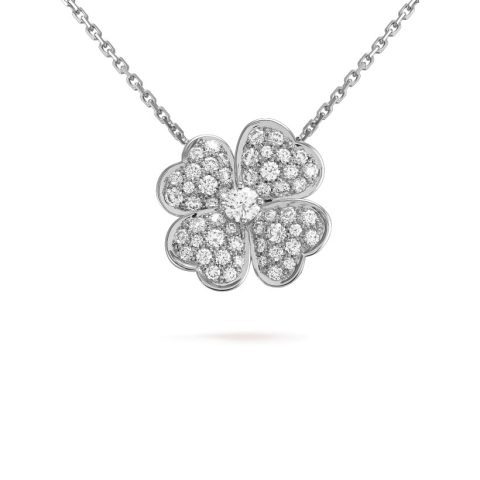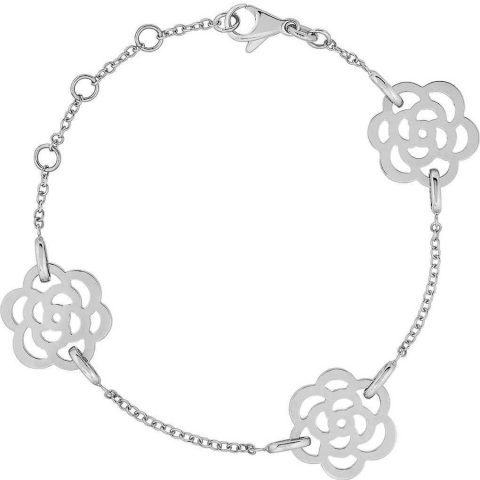Cartier Layered Necklace
Cartier Layered Necklace

Cartier layered necklaces have timeless cachet that’s impossible to resist. The company’s history of making beautiful pieces is legendary, but the new designs and variations are just as striking. The collection includes everything from delicate 18-carat rose-gold chains to chunkier high-impact pieces. The intricate craftsmanship and impeccable materials make Cartier a true fashion favorite.
Cartier’s passion for India
Using the rich history of India as inspiration for his designs, Cartier has recreated a replica of the famous Nawanagar necklace for the movie Ocean’s 8. It is a smaller version of the original necklace and is made of Zirconium. The necklace was worn by the Maharaja Sir Ranjitsinghji Jadeja of Nawanagar, a famous cricketer.
Inspired by Indian art and design, Cartier created entire collections that are inspired by the country. Its encounter with Indian designs dates back to 1911 when Jacques Cartier, one of the company’s pioneers, came across the vibrant and beautiful jewelry found in India. Inspired by Indian art, he created a collection of jewellery that would later become known as Tutti Frutti. The collection was later patented by Cartier, which has since become an icon of the jewelry industry.
The Indian diamonds and rubies featured in the Patiala Ruby Necklace were sourced from a famous gemstone supplier in India, the Maharaja of Patiala. His patronage of the French luxury house made it possible for Cartier to obtain large quantities of gems from India, which were transformed into some of the finest jewels in history. One of Cartier’s most famous jewels is the Patiala Ruby Necklace, which features rubies, diamonds, and natural pearls.
In 1847, Louis-Francois Cartier opened his namesake maison. Within a few years, the company became one of the world’s foremost luxury jewelry houses. It was famous enough to attract the patronage of Napoleon Bonaparte’s niece Princess Mathilde. In the 1920s, the Cartier brand began to use Indian stone carving techniques in its designs.
The Maharaja of Patiala gave the necklace to one of his wives. The necklace was photographed in 1931, and later sold at an auction in Geneva in 2000. It was then restored by the Cartier Tradition department, which deals with vintage pieces. It then became a bracelet.
The Patiala Choker
The Patiala necklace is a multi-layered necklace with diamonds, rubies, and pearls. It was created by the Paris branch of Cartier in 1931. Its centerpiece is a yellow diamond. The necklace has a history dating back to the Maharaja of Patiala, who commissioned jewels for himself and his family.
The necklace was originally three parts, with the top layer being a choker of six lines of rubies. The middle layer was made mostly of pearl strings, while the bottom layer was heavily studded with diamonds. The necklace was sold by Christie’s in Geneva in 2000. Since then, it has been restored by Cartier’s Tradition department, which deals with vintage pieces.
The necklace is one of the most expensive pieces of jewellery ever made. Maharaja Bhupinder Singh of Patiala commissioned Cartier to create the necklace for him. It was made in a fusion of Indian themes and Western Art Deco style. It has sparked criticism in the US, including from popular YouTuber Emma Chamberlain.
The necklace is composed of 2,390 diamonds, including a De Beers diamond and two Burmese rubies. The necklace went missing from the Patiala treasury in 1948, but was recovered by Cartier in 1998 and replaced with synthetic diamonds. Today, it is valued at $3 million.
The Patiala diamond layered necklace is one of the most beautiful pieces of jewelry ever made. In 1947, India became an independent state, which meant the end of the maharajas and their power. Soon after, the Patalia necklace went missing. It has not been seen since then, and is believed to be hidden somewhere.
Cartier’s close relationship with India began during the Art Deco period. Cartier began creating Indian-inspired jewels that were re-designed in Western styles. The Maharaja of Patiala, for example, commissioned Cartier to re-set his crown jewels. This was one of Cartier’s largest single commissions.
The Patiala diamond layered necklace was designed by Cartier Paris for Maharaja Bhupinder Singh of Patiala in 1928. It features two hundred and thirty diamonds, including the seventh largest diamond in the world. It is also the only diamond necklace that features a large yellow diamond. It is currently in the vaults of the Reserve Bank of India in Mumbai.
The Collier Hindou
The Collier Hindou necklace is one of Cartier’s most famous pieces, featuring a variety of precious stones. It was commissioned by socialite Daisy Fellowes in 1936. It was an early example of the company’s tutti-frutti collection and features diamonds, rubies, and sapphires in unusual cuts. It is also one of the most elaborate and expensive pieces of Cartier jewelry ever created.
The necklace was originally designed to wrap around the neck with a black silk cord. The necklace contains sapphires, which are considered unlucky in India. Fellowes’ daughter later changed the clasp to a clasp, which keeps the necklace securely fastened around the neck.
The emerald in the necklace was originally mounted onto a brooch, but eventually became detached. The emerald then passed through several private owners in Europe. It was subsequently sold at Christies in 2009 for USD 794,500. Afterwards, it was sold to a jeweler on 47th Street in New York City. From there, it remained in a private gem dealer’s collection until the 1990s, when it was shown in a Romance of the Taj Mahal exhibition. Moreover, this piece of jewelry has been traced back to the time when Cartier was founded.
Cartier created this jewel for a famous client, Bhupinder Singh. This legendary Indian businessman supplied Cartier with gems and the jewel was later transformed into a variety of exceptional pieces. One of the most famous jewels made from these precious stones is the Patiala Ruby Necklace, composed of rubies, diamonds, and natural pearls.
Cartier’s affinity for India and its culture was documented in many history books. The Al Thani Collection was displayed in several world-class museums, which helped to expand the French jeweler’s knowledge of Indian design. This collection gave a glimpse into the extraordinary taste of Indian Maharajahs, who lived in Paris and influenced many French jewelers.
Cartier first introduced its Indian style during the 1925 Art Deco exhibition in Paris. They were already making polychromatic “Indian style” jewels by the start of the twentieth century. In fact, the first recorded piece of “Indian style” jewelry was created for Queen Alexandra in 1901. She wanted an elaborate necklace with gemstones to match her Indian silk gowns.
The Amulette de Cartier
The Amulette de Cartier is a layered necklace that combines the power of positive energy and protection with the beauty of nature. The amulette is made of 18K yellow gold and is set with 178 brilliant-cut diamonds and onyx. It is enclosed in a padlock, which keeps it safe from harm.
Cartier is known for producing luxury jewelry and watches from rare materials. Their designs are innovative and full of symbolism. Some of their most famous pieces include the modern Love bracelet and the Patiala necklace. Cartier also creates custom-made antique and vintage jewelry. Whether you’re looking for a necklace that is reminiscent of the past or one that is entirely modern, you’re sure to find something to match your personal style.
Cartier’s necklaces and watches are designed with extreme care and craftsmanship. From dainty 18-carat rose gold chains to chunkier pieces adorned with chalcedony and malachite stones, there’s a Cartier piece for you.
Cartier Layered Necklace



